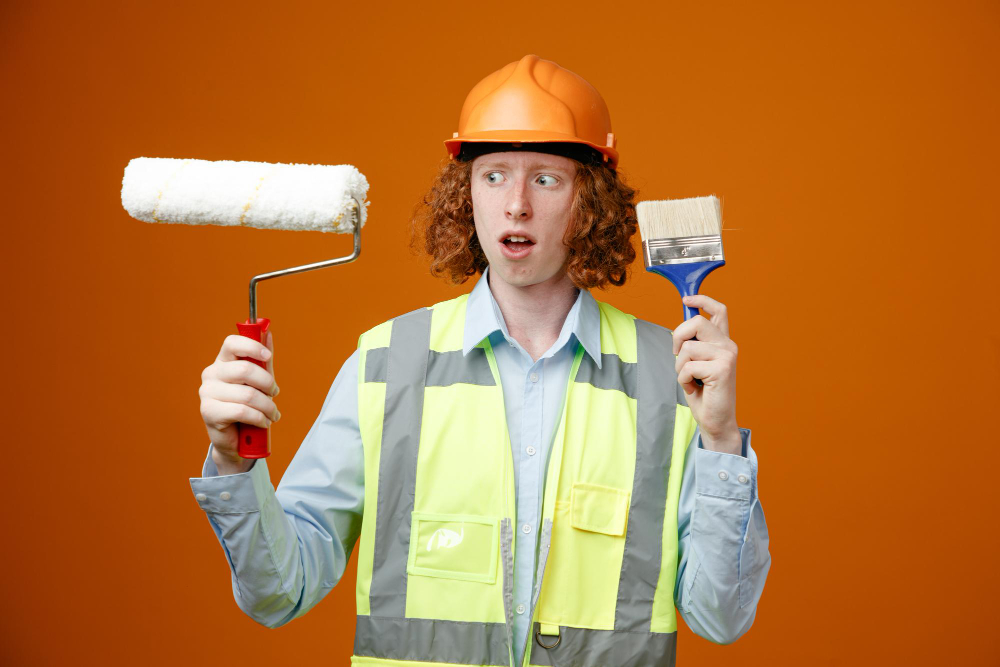Common Mistakes in Residential Painting and How to Avoid Them

When it comes to refreshing the look of your home, a fresh coat of paint can work wonders. However, without the right knowledge and preparation, the painting process can quickly turn from a simple task into a frustrating ordeal. In this blog post, we will explore some common mistakes made during residential painting and provide tips on how to avoid them. If you're in need of professional painters in South Daytona, FL, Color Masters Painting is here to help. Contact us today for a free quote.
1. Skipping Surface Preparation
One of the most common mistakes in residential painting is skipping the crucial step of surface preparation. The quality of your paint job heavily depends on how well you prepare the surfaces you plan to paint.
How to Avoid It:
- Clean the Surfaces: Dirt, grease, and grime can prevent paint from adhering properly. Use a mild detergent and water to clean walls and other surfaces.
- Repair Damages: Fill in any holes or cracks with spackle and sand them smooth before painting.
- Prime the Surface: Use a good quality primer to create a stable base for the paint. This is especially important when painting over dark colors or new drywall.
2. Using Low-Quality Paint
While it might be tempting to save a few bucks by purchasing cheaper paint, low-quality paint often results in poor coverage, uneven color, and a shorter lifespan.
How to Avoid It:
- Invest in High-Quality Paint: Brands like Sherwin-Williams or Benjamin Moore offer superior coverage and durability.
- Consider the Finish: Choose the right finish for the area you're painting. For instance, semi-gloss is great for high-traffic areas, while matte finishes are better for ceilings.
3. Ignoring Weather Conditions
Painting in poor weather conditions can lead to several problems, such as paint not drying properly or peeling off soon after application.
How to Avoid It:
- Check the Weather: Ensure that the weather is dry and the temperature is within the recommended range for painting (typically between 50°F and 85°F).
- Avoid Humidity: High humidity can cause the paint to dry slowly and unevenly. Try to paint on days with low humidity.
4. Not Using Painter's Tape
Skipping painter's tape can lead to messy edges and a lack of precision, making your paint job look unprofessional.
How to Avoid It:
- Use Quality Painter's Tape: Apply painter's tape along the edges where different colors or surfaces meet.
- Remove Tape Correctly: Remove the tape while the paint is still slightly wet to avoid peeling off the dried paint.
5. Overloading the Brush or Roller
Applying too much paint at once can lead to drips, streaks, and an uneven finish.
How to Avoid It:
- Load Properly: Dip your brush or roller lightly into the paint and then blot off excess paint on the tray or bucket edge.
- Use Thin Coats: Apply multiple thin coats rather than one thick coat for a smoother and more even finish.
6. Neglecting to Mix Paint Thoroughly
Paint that isn't mixed well can result in inconsistent color and texture.
How to Avoid It:
- Stir Well: Use a paint stirrer to mix the paint thoroughly before you start applying it.
- Mix Occasionally: Stir the paint occasionally during the painting process to keep the consistency uniform.
7. Rushing the Job
Hurrying through the painting process can lead to numerous mistakes, including poor coverage and missed spots.
How to Avoid It:
- Take Your Time: Plan your project timeline to allow for adequate drying times and attention to detail.
- Follow the Instructions: Read and follow the paint manufacturer's instructions for drying times and re-coating guidelines.
8. Not Protecting Surrounding Areas
Failing to protect floors, furniture, and other surrounding areas can result in unwanted paint splatters and stains.
How to Avoid It:
- Use Drop Cloths: Cover the floors with drop cloths or plastic sheeting to catch any spills or drips.
- Move Furniture: Move or cover furniture and other items in the room to protect them from paint splatters.
9. Inconsistent Application
Inconsistent application methods can lead to visible brush strokes, roller marks, and an uneven finish.
How to Avoid It:
- Use the Right Tools: Choose the appropriate brushes and rollers for the type of paint and surface you're working on.
- Maintain a Wet Edge: Keep a wet edge while painting by blending each stroke into the previous one to avoid lap marks.
10. Neglecting Safety Precautions
Painting can expose you to fumes and chemicals that can be harmful if proper safety precautions aren't taken.
How to Avoid It:
- Ventilate the Area: Ensure good ventilation by opening windows and using fans to circulate air.
- Wear Protective Gear: Use masks, gloves, and safety goggles to protect yourself from harmful fumes and splatters.
Conclusion
By avoiding these common mistakes, you can achieve a professional-looking paint job that enhances the beauty and value of your home. However, if you want to ensure the best results without the hassle, consider hiring professional painters in South Daytona, FL.
At Color Masters Painting, we specialize in delivering flawless paint jobs that stand the test of time. Contact us today to get your free quote and experience the difference that professional expertise can make!